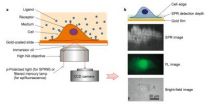(Press-News.org) In order to catch a thief, you have to think like one.
UT Dallas computer scientists are trying to stay one step ahead of cyber attackers by creating their own monster. Their monster can cloak itself as it steals and reconfigures information in a computer program.
In part because of the potentially destructive nature of their technology, creators have named this software system Frankenstein, after the monster-creating scientist in author Mary Shelley's novel, Frankenstein; or The Modern Prometheus.
"Shelley's story is an example of a horror that can result from science, and similarly, we intend our creation as a warning that we need better detections for these types of intrusions," said Dr. Kevin Hamlen, associate professor of computer science at UT Dallas who created the software, along with his doctoral student Vishwath Mohan. "Criminals may already know how to create this kind of software, so we examined the science behind the danger this represents, in hopes of creating counter measures."
Frankenstein is not a computer virus, which is a program that can multiply and take over other machines. But, it could be used in cyber warfare to provide cover for a virus or another type of malware, or malicious software.
In order to avoid antivirus software, malware typically mutates every time it copies itself onto another machine. Antivirus software figures out the pattern of change and continues to scan for sequences of code that are known to be suspicious.
Frankenstein evades this scanning mechanism. It takes code from programs already on a computer and repurposes it, stringing it together to accomplish the malware's malicious task with new instructions.
"We wanted to build something that learns as it propagates," Hamlen said. "Frankenstein takes from what is already there and reinvents itself."
"Just as Shelley's monster was stitched from body parts, our Frankenstein also stitches software from original program parts, so no red flags are raised," he said. "It looks completely different, but its code is consistent with something normal."
Hamlen said Frankenstein could be used to aid government counter terrorism efforts by providing cover for infiltration of terrorist computer networks. Hamlen is part of the Cyber Security Research and Education Center in the Erik Jonsson School of Engineering and Computer Science.
The UT Dallas research is the first published example describing this type of stealth technology, Hamlen said.
"As a proof-of-concept, we tested Frankenstein on some simple algorithms that are completely benign," Hamlen said. "We did not create damage to anyone's systems."
The next step, Hamlen said, is to create more complex versions of the software.
###
Frankenstein was described in a paper published online in conjunction with a presentation at a recent USENIX Workshop on Offensive Technologies.
The research was supported by the National Science Foundation and Air Force Office of Scientific Research.
Frankenstein programmers at UT Dallas test a cybersecurity monster
Researchers hope software helps develop defenses against new kinds of attacks
2012-08-28
ELSE PRESS RELEASES FROM THIS DATE:
WMS issues important new practice guidelines for prevention and treatment of lightning injuries
2012-08-28
Philadelphia, PA, August 27, 2012 – About 24,000 people are killed by lightning every year, with about 10 times as many people injured. The Wilderness Medical Society has issued important new practice guidelines for precautions that can lower the likelihood of being killed or injured and recommendations for effective medical treatments post-strike. These guidelines appear in the September issue of Wilderness & Environmental Medicine (www.wemjournal.org/article/S1080-6032(12)00180-9/fulltext).
Updating the 2006 guidelines, a panel of experts chosen for their clinical ...
New imaging technique homes in on electrocatalysis of nanoparticles
2012-08-28
By modifying the rate at which chemical reactions take place, nanoparticle catalysts fulfill myriad roles in industry, the biomedical arena and everyday life. They may be used for the production of polymers and biofuels, for improving pollution and emission control devices, to enhance reactions essential for fuel cell technology and for the synthesis of new drugs. Finding new and more effective nanoparticle catalysts to perform these useful functions is therefore vital.
Now Nongjian (NJ) Tao — a researcher at Arizona State University's Biodesign Institute — has found ...
A new look at proteins in living cells
2012-08-28
Proteins adorning the surfaces of human cells perform an array of essential functions, including cell signaling, communication and the transport of vital substances into and out of cells. They are critical targets for drug delivery and many proteins are now being identified as disease biomarkers — early warning beacons announcing the pre-symptomatic presence of cancers and other diseases.
While study of the binding properties of membrane proteins is essential, detailed analysis of these complex entities is tricky. Now, Nongjian (NJ) Tao, Professor of Electrical Engineering, ...
Advanced CT scans accurately assess coronary blockages
2012-08-28
An ultra-fast, 320-detector computed tomography (CT) scanner can accurately sort out which people with chest pain need – or don't need – an invasive procedure such as cardiac angioplasty or bypass surgery to restore blood flow to the heart, according to an international study. Results of the study, which involved 381 patients at 16 hospitals in eight countries, are scheduled to be presented at the European Society of Cardiology Congress in Munich, Germany, on August 28.
"The CORE 320 study is the first prospective, multicenter study to examine the diagnostic accuracy ...
Better vaccines for tuberculosis could save millions of lives
2012-08-28
Cases of one of the world's deadliest diseases—tuberculosis—are rising at an alarming rate, despite widespread vaccination. Reasons for the ineffectiveness of the vaccine, especially in regions where this infectious disease is endemic, as well as arguments for replacing the existing vaccine with novel synthetic vaccines, are presented in a review published online August 28th in Trends in Molecular Medicine.
"Tuberculosis is a global health threat, and it is a highly communicable disease that may influence practically anyone and everyone," says senior author Javed Agrewala ...
CRT consensus set to standardize and improve care for patients worldwide
2012-08-28
Munich, Germany – August 28 2012: Recommendations for the practical management of CRT patients have been set out for the first time in an international consensus statement on cardiac resynchronization therapy (CRT) in heart failure.
The 2012 Expert Consensus Statement on Cardiac Resynchronization Therapy (CRT) in Heart Failure: Implant and Follow-up Recommendations and Management was developed by the European Heart Rhythm Association (EHRA), a registered branch of the European Society of Cardiology (ESC), and the Heart Rhythm Society (HRS) in the US, and will be published ...
PRAGUE-12 trial: Randomized open multicenter study
2012-08-28
Munich, Germany – August 28 2012: Surgical ablation of the left atrium to restore regular sinus rhythm is widely used in patients with atrial fibrillation (AF) undergoing cardiac surgery. The restoration of sinus rhythm might decrease the risk of heart failure, stroke and death during long-term follow up.(1) However, despite its promise, this theoretical benefit has never been clearly established - previous randomised studies have been small and performed in a selected group of patients undergoing mitral valve surgery.
Now, a multicentre study of surgical ablation (using ...
Omission of aspirin from antiplatelet regimen: The WOEST study
2012-08-28
Munich, Germany – August 28 2012: Lifelong anticoagulation is necessary for the prevention of stroke in patients with rhythm disturbances and with mechanical valves. Patients who have a coronary stent implanted also need the antiplatelet drugs aspirin and clopidogrel to prevent the rare but lethal complication of stent thrombosis. For patients taking oral anticoagulant drugs (for atrial fibrillation or mechanical valve) who also have to undergo coronary stenting, the optimal antithrombotic treatment is still unknown, even though the use of all three drugs (oral anticoagulants, ...
Catheter ablation for atrial fibrillation: Results from the first European registry
2012-08-28
Munich, Germany – August 28 2012: Catheter ablation for atrial fibrillation (Afib) is safe and suppresses arrhythmia recurrences in 74% of patients after a single procedure, according to results from the one-year follow-up of the Atrial Fibrillation Ablation Pilot Study, the first European registry to evaluate the real-life epidemiology of catheter ablation for AFib. The survey also showed that arrhythmia-related symptoms such as palpitations, shortness of breath, fatigue or dizziness - present in 86% of patients before the ablation - were significantly reduced.
The findings ...
CT angiography and perfusion to assess coronary artery disease: The CORE320 study
2012-08-28
Munich, Germany – August 28 2012: A non-invasive imaging strategy which integrates non-invasive CT angiography (CTA) and CT myocardial perfusion imaging (CTP) has robust diagnostic accuracy for identifying patients with flow-limiting coronary artery disease in need of myocardial revascularisation, according to results of the CORE320 study presented here today by Dr Joao AC Lima from Johns Hopkins Hospital, Baltimore, USA.
The CORE320 study is a prospective multicentre international trial which evaluated the diagnostic accuracy of combined non-invasive CTA and CTP as compared ...
LAST 30 PRESS RELEASES:
Mapping ‘dark’ regions of the genome illuminates how cells respond to their environment
ECOG-ACRIN and Caris Life Sciences unveil first findings from a multi-year collaboration to advance AI-powered multimodal tools for breast cancer recurrence risk stratification
Satellite data helps UNM researchers map massive rupture of 2025 Myanmar earthquake
Twisting Spins: Florida State University researchers explore chemical boundaries to create new magnetic material
Mayo Clinic researchers find new hope for toughest myeloma through off-the-shelf immunotherapy
Cell-free DNA Could Detect Adverse Events from Immunotherapy
American College of Cardiology announces Fuster Prevention Forum
AAN issues new guideline for the management of functional seizures
Could GLP-1 drugs affect risk of epilepsy for people with diabetes?
New circoviruses discovered in pilot whales and orcas from the North Atlantic
Study finds increase in risk of binge drinking among 12th graders who use 2 or more cannabis products
New paper-based technology could transform cancer drug testing
Opioids: clarifying the concept of safe supply to save lives
New species of tiny pumpkin toadlet discovered in Brazil highlights need for conservation in the mountain forests of Serra do Quiriri
Reciprocity matters--people were more supportive of climate policies in their country if they believed other countries were making significant efforts themselves
Stanford Medicine study shows why mRNA-based COVID-19 vaccines can cause myocarditis
Biobanking opens new windows into human evolution
Sky-high smoke
AI tips off scientists to new drug target to fight, treat mpox
USC researchers develop next-generation CAR T cells that show stronger, safer response in animal models
New study reveals Industrial Revolution’s uneven health impacts across England
Vine-inspired robotic gripper gently lifts heavy and fragile objects
Fingerprint of ancient seafarer found on Scandinavia’s oldest plank boat
Lunar soil analyses reveal how space weathering shapes the Moon’s ultraviolet reflectance
Einstein’s theory comes wrapped up with a bow: astronomers spot star “wobbling” around black hole
Danforth Plant Science Center to lead multi-disciplinary research to enhance stress resilience in bioenergy sorghum
Home-delivered groceries improve blood sugar control for people with diabetes facing food insecurity
MIT researchers identified three cognitive skills we use to infer what someone really means
The Iberian Peninsula is rotating clockwise according to new geodynamic data
SwRI, Trinity University to study stable bacterial proteins in search of medical advances
[Press-News.org] Frankenstein programmers at UT Dallas test a cybersecurity monsterResearchers hope software helps develop defenses against new kinds of attacks


